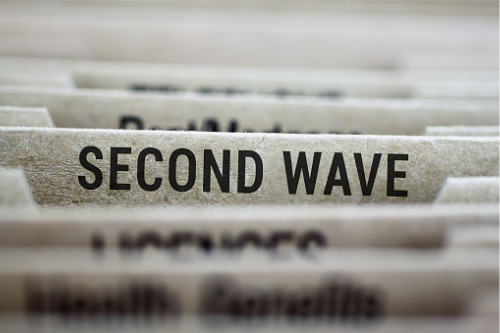With the first wave yet to arrive, KIMC says groundwork for the second has already been laid

With more than a third of U.S. states still experiencing an increase in COVID-19 infections, it’s clear that the nation’s economy is far from being out of the woods. Last week’s disputed job numbers raised spirits somewhat, but unemployment is still a ghastly 13 percent. COVID-19, as both a health and economic menace, is still wreaking havoc, particularly on the commercial real estate sector.
Many are anticipating a wave of defaults in the commercial space in the coming months, fuelled by thousands of bankruptcies and permanent business closures. Jonathan Needell, president and CIO of Kairos Investment Management Company, says a second wave of defaults is already building.
As Needell explains it, the first wave was already in motion before COVID-19 arrived. For many of the larger retail companies that have recently filed for bankruptcy – Neiman Marcus, Art Van, JCPenney, Modell’s, Pier One – the writing’s been on the wall for some time now. COVID-19 simply hastened the demise of their obsolete business models. No amount of government stimulus is going to save them.
Similarly challenged are highly leveraged businesses such as Brooks Brothers, Tuesday Morning and 24 Hour Fitness, whose futures are murky at best.
“When these tenants shutter their space or shrink and restructure,” Needell says, “they’re going to give a lot of space back in bankruptcy.”
Trying to time the two waves isn’t easy. We’re well into the first, but it keeps being extended: A wave of protests over the last two weeks saw social distancing guidelines thrown out the window; COVID-19-realted infection and hospitalization rates are rising; health experts have said the coronavirus may remain a disruptor until a vaccine is developed. Needell says last week’s employment figures should also be interpreted as being native to the first wave rather than signalling the beginning of the recovery.
“We’re still at 14 percent unemployment,” he says.
Needell credits recently released Paycheck Protection Program funds for the rise in employment, as they allowed furloughed employees to return to work. He expects similar results over the next couple of weeks, but PPP isn’t going to last forever.
“Are we going to end up at 10 percent unemployment rather than 20? That may be the consequence, but ten is not healthy,” he says. “The reality is that when businesses go bust and you see a couple hundred locations for one retailer go away, those jobs go way until the activity can be replaced, which takes expansion and recovery, not just automatic rehiring.”
Another factor contributing to a potential second wave of defaults is the country’s mostly justifiable hastiness to get back to normal. Most businesses aren’t ready to do it properly, or in a way that will generate enough income to keep them afloat, or in a way that will stop the spread of COVID-19.
“There’s definitely activity,” Needell says, “but activity after being 50 percent down is kind of like when you get sick and you decide you feel better so you go back to work too early and you’re like, ‘Wow, I wasn’t really ready.’”
If there’s good news to be found here, it’s that the effects a second wave – of COVID-19 or defaults – should bear little resemblance to the nightmare of the first.
“There’s no doubt in my mind that a second wave or an extended first wave won’t be as bad as the first, but I do not think that we can depend on a vaccine until next year,” says Needell.
Some commercial sectors should survive the pandemic. Needell sees storage and industrial as the most stable coming out of COVID-19, with e-commerce chipping in to eat up some of the abandoned retail space. Retail itself will continue to suffer, but as more companies wrap their heads around omni-channel and restaurants shift to the ghost kitchen model, there will be opportunities for survival.
“There’s innovation happening,” Needell says, “but it’s mostly benefiting the corporate tenants and not the mom-and-pop.”



